From November 1, 2025 to March 8, 2026, PAV - Parco Arte Vivente in Turin will host La Sagesse deslianes (The Wisdom of the Lianas), a solo exhibition by artist Binta Diaw, curated by Marco Scotini. The exhibition is part of the path that the Turin center has dedicated in recent years to the relationships between nature, the female body and decolonial thought, after the solo shows of Navjot Altaf, Arahmaiani and Regina José Galindo. The chosen title refers to the liana, a climbing plant capable of adapting to difficult conditions and creating vital networks among forest trees. The liana becomes a metaphor for alliance, resistance and collective resilience, themes central to the artist’s research. Through environmental installations, organic materials and historical references, Diaw addresses issues related to Afrodescendant diasporic memory, ecological survival and female resistance. Born in Milan in 1995 to Senegalese parents, Diaw has developed an artistic practice that interweaves ecology, feminism and colonial history. In her works, body, nature and identity come into relationship through symbolic materials such as soil and synthetic hair, transformed into tools of cultural transmission and poetic resistance.
Central to the exhibition are two works that are already well-known on the international scene. Dïàspora (2021), presented at the Berlin Biennale in 2022, is an installation composed of a suspended spiderweb-like structure made by weaving braids of hair. The work recalls the silent resistance of enslaved women, who used hair as a hiding place for seeds and maps, thus transforming body matter into a living archive and clandestine space of survival. Next to it, Chorus of Soil (2019) reproduces the floor plan of the slaver ship Brooks, among the most well-known images related to the Atlantic slave trade. The installation, composed of soil and seeds, recalls the silhouettes of enslaved bodies, transforming them into plant germinations. In this way, the representation of oppression is converted into a garden of memory and rebirth.
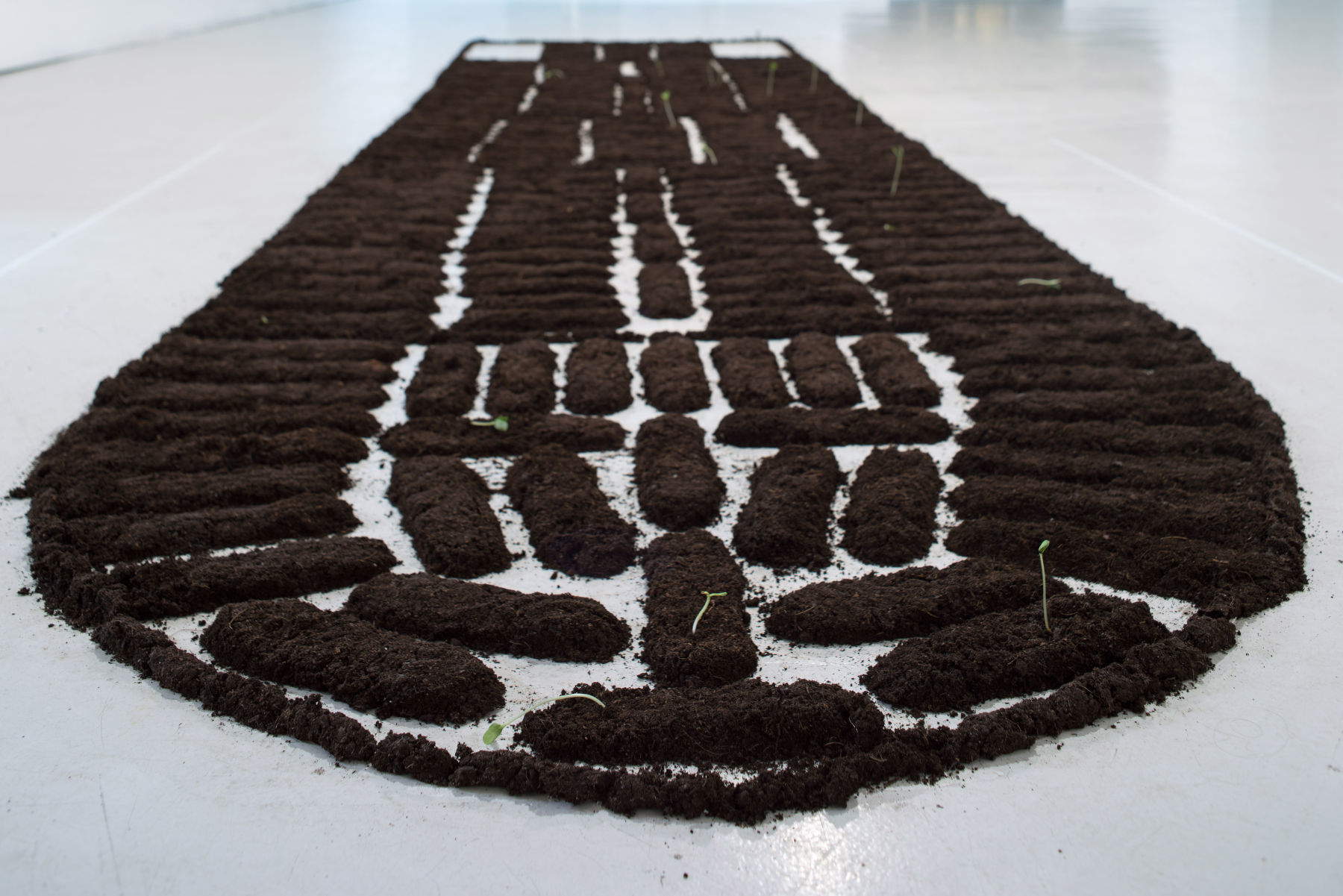
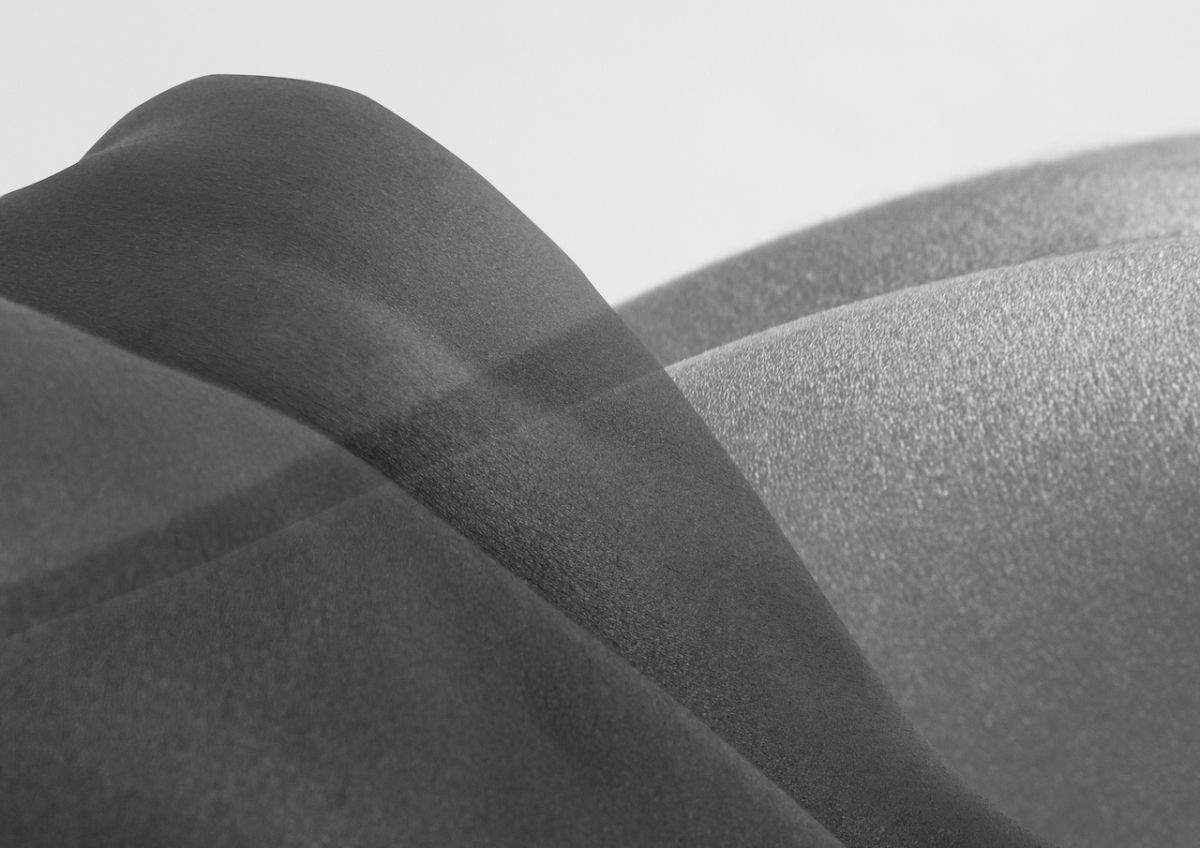
The exhibition itinerary also includes other major works. Paysage Corporel and Ritual explore the possibility of considering the artist’s body as landscape through the use of chalk and natural materials. In Juroom ñaar, columns of charcoal and knotted braids hark back to the sacrifice of the women of the Senegalese village of Nder, who in 1819 chose collective suicide in order not to fall into slavery. The work is accompanied by voices in the Wolof language, recalling the oral tradition of the griots. The itinerary is completed with Being Body, a video work that relates memory, body and nature. The projection transforms the exhibition space into a place of crossing and relating to the living, suggesting a choral approach in which the aesthetic and political dimensions overlap. The installations are developed in a set-up composed of earth mats, suspended structures and woven textile elements. The scenic layout recalls the sinuous paths of lianas in the forest and shapes a shared landscape in which art and nature dialogue with social and historical issues.
With La Sagesse des lianes, PAV confirms its line of research oriented toward the construction of a new political ecology, which aims to rethink the relationships between art, nature and global society. The exhibition is thus part of a program that aims to question dominant narratives, enhancing decolonial perspectives and new images of community and belonging.
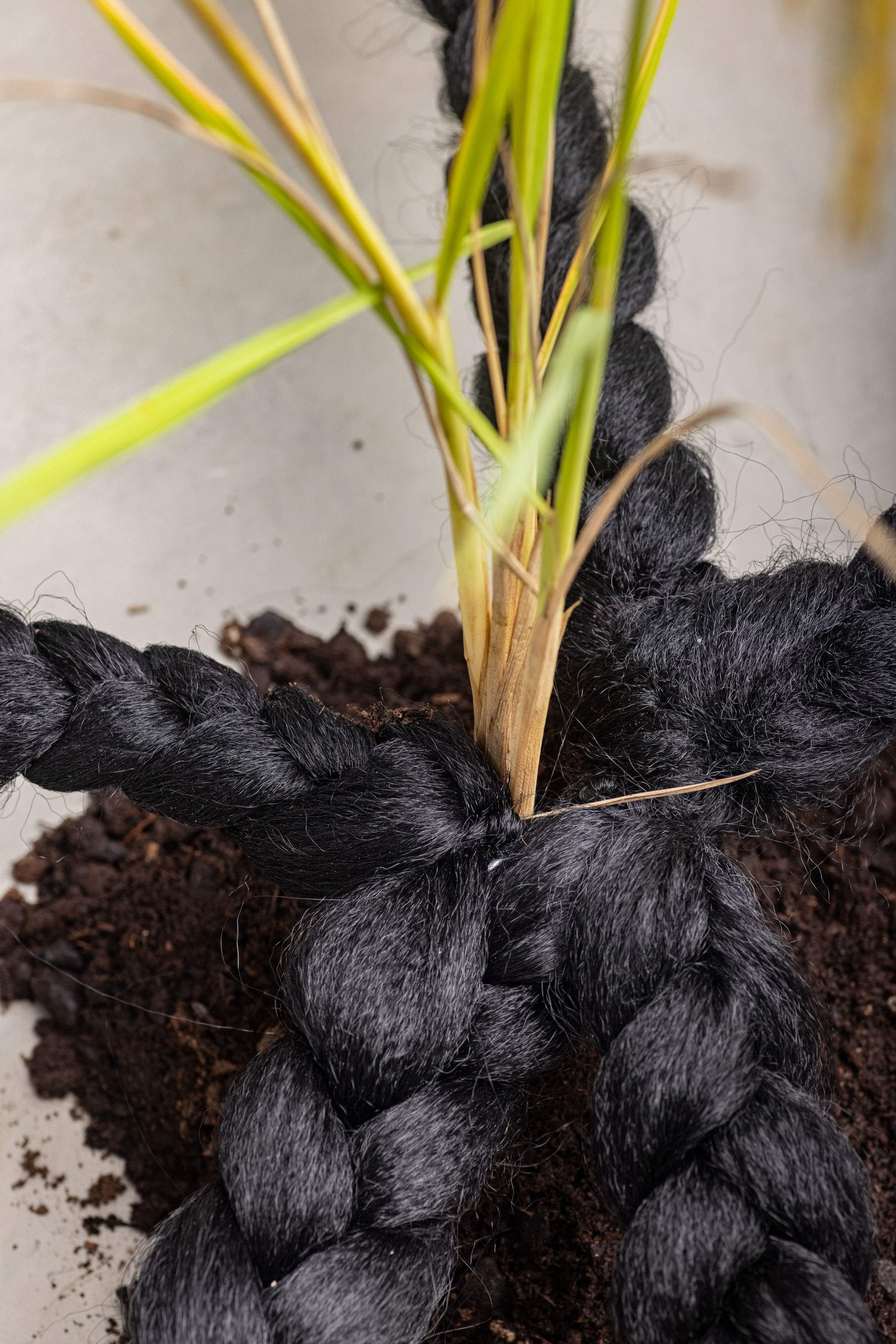
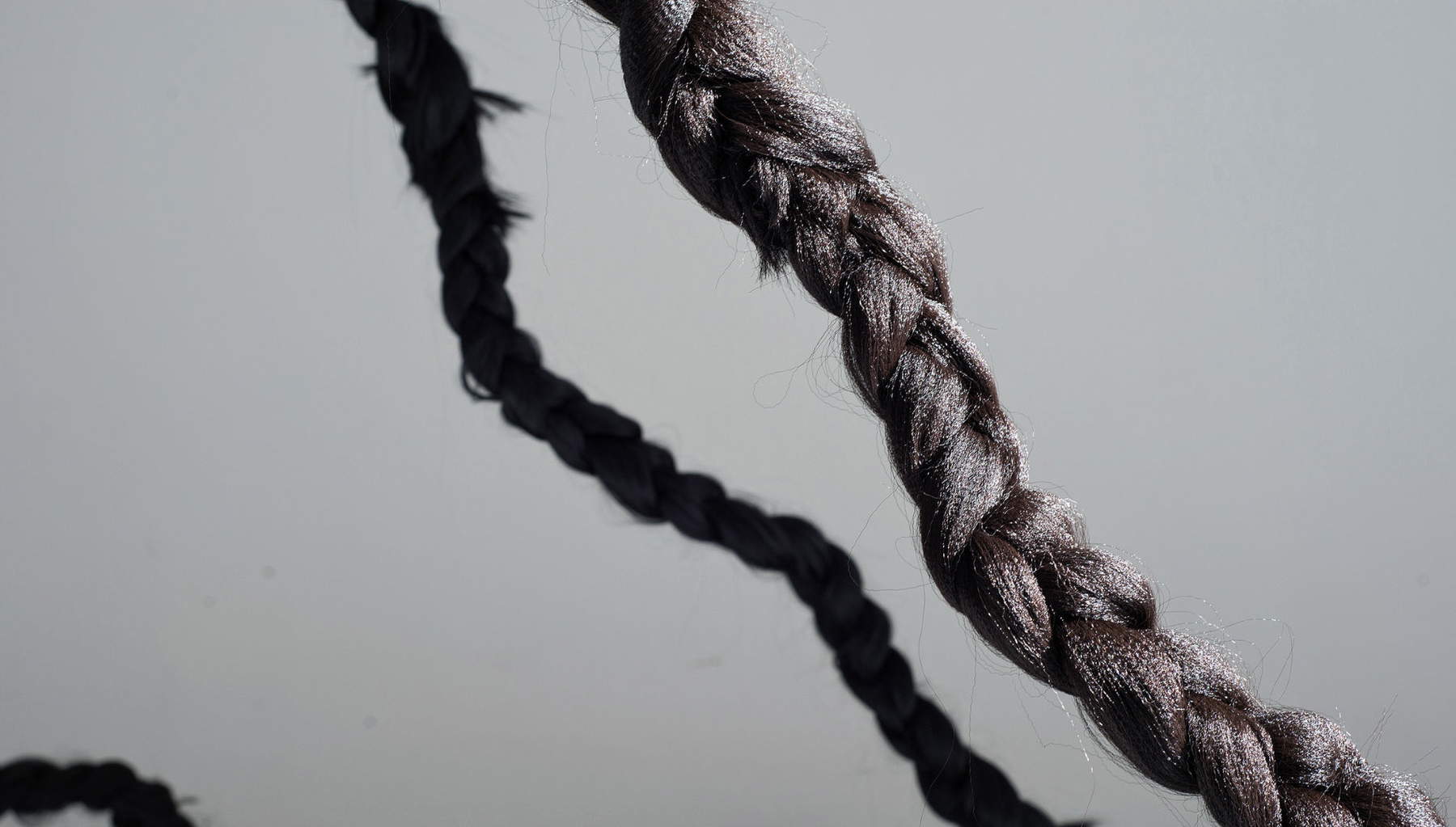
Parallel to the exhibition, on December 10, 2025 AEF/PAV (Activities Education Training) will offer Wunderkammer d’Altrove, a training course dedicated to teachers in Piedmont schools. The initiative is part of the aulArte project, supported by the Fondazione per l’Arte Moderna e Contemporanea CRT, with the aim of fostering teachers’ access to cultural places through activities based on contemporary art practices. Specific educational paths are also planned for schools and groups. Among them, Flying Roots is a moving workshop that will take place both in the interior spaces of the museum and in the 23,500-square-meter park surrounding PAV. Guided by a collective approach, participants will be invited to produce a textile chain stitch by stitch, to be used to bind one another in a shared playful action. The exhibition La Sagesse des lianes is produced with the support of Compagnia di San Paolo, Fondazione CRT, the Piedmont Region and the City of Turin.
Binta Diaw (Milan, Italy, 1995) is an internationally active Italian-Senegalese visual artist. Raised between Italy and Senegal, she trained at the Brera Academy of Fine Arts in Milan and at the École d’Art et de Design in Grenoble, France. Her practice includes installations, sculpture, video, photography and performance, and is characterized by a philosophical reflection on contemporary social phenomena: migration, diasporic identity, sense of belonging and gender issues. In her works, she uses natural and symbolic materials, such as earth, plaster, ropes, synthetic hair or rolled flags, to construct a plastic language that focuses on the physical and sensory experience of the viewer, who is invited to confront his or her own positioning in the world and the meaning of the work.
The artist adopts Afro-diasporic, intersectional and feminist perspectives, positioning herself critically against the dominant Eurocentric view. Her works explore different levels of identity, personal, as a black woman in a Europeanized context, and collective, linked to a continent traversed by complex histories and geographies. Her work aims to give voice to marginalized memories and promote a more inclusive and plural vision of the present.
His creations are part of private collections and have been presented in numerous solo and group exhibitions at Italian and international institutions, including MAXXI - Museo nazionale delle arti del XXI secolo (Rome), Fondazione Sandretto Re Rebaudengo (Turin), Museo Madre (Naples), Liverpool Biennial (UK), Berlin Biennale (Germany), Istituto Svizzero di Roma, Istituto Italiano di Cultura di Dakar, Express Newark (US), Fondazione Nicola Trussardi (Milan), Gwanju Biennale (South Korea), Magasin CNAC (Grenoble), Museo Novecento (Florence), Palazzo Grimani (Venice), Institut Culturel Italien de Paris, FRAC Alsace (France), Castello di Rivoli (Turin), Bamako Encounters (Mali), Murate Art District (Florence), Centrale Fies (Dro), Museion (Bolzano), Galerie Cécile Fakhoury (Paris, Dakar, Abidjan) and Prometeo Gallery (Milan).
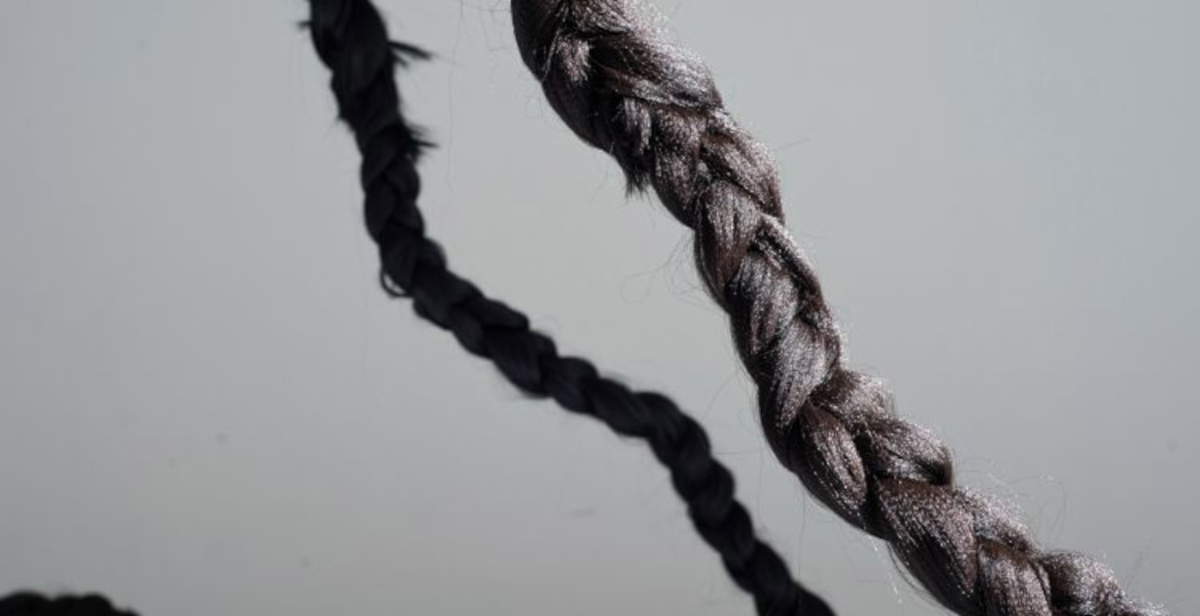 |
| The wisdom of lianas: at PAV in Turin, the solo exhibition of Binta Diaw |
Warning: the translation into English of the original Italian article was created using automatic tools. We undertake to review all articles, but we do not guarantee the total absence of inaccuracies in the translation due to the program. You can find the original by clicking on the ITA button. If you find any mistake,please contact us.